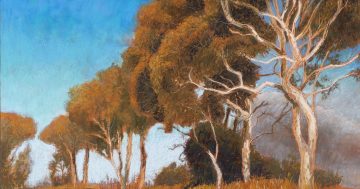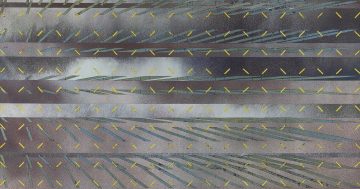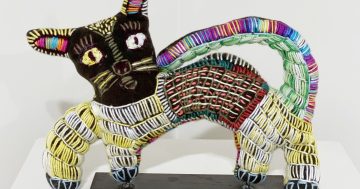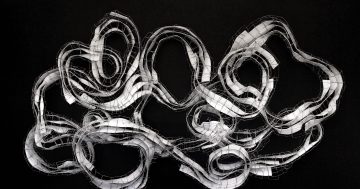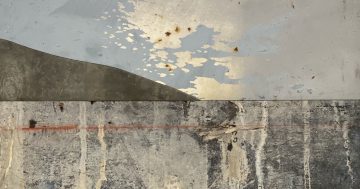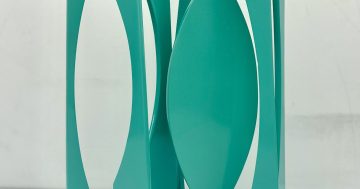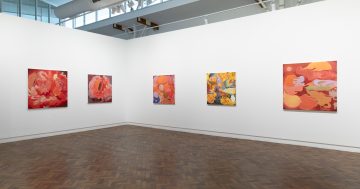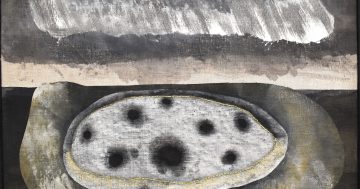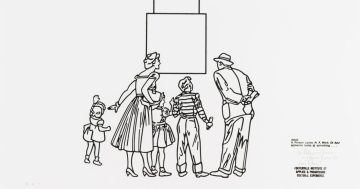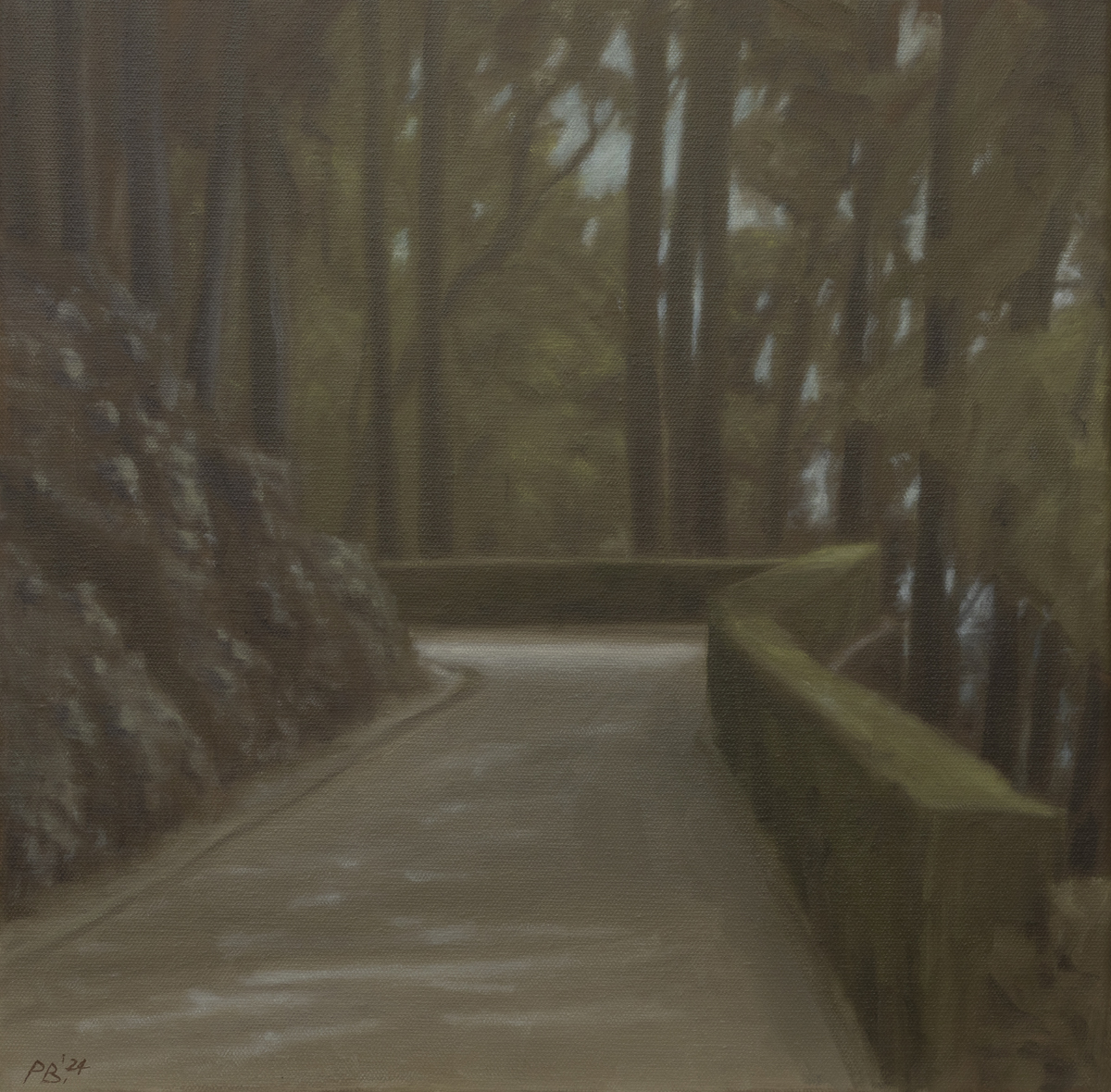
Peter Boggs – Lakeside walk – oil on canvas, 40 x 40cm. Photo: Supplied.
Peter Boggs is not a household name in Australian art circles, however he is one of Australia’s most admired ‘artist’s artist’ and has a string of sell-out exhibitions to his name.
As this is his 11th solo exhibition in Canberra, he could also be called an honorary Canberran.
Born in New Zealand and trained under the legendary Colin McCahon, Boggs, after teaching in Europe, moved to Australia in 1987. Five years later he settled in the Blue Mountains west of Sydney.
His art is unassuming, not bombastic, huge or flashy, but represents the triumph of ‘slow art’ and of visual intelligence.
His paintings are quite small, rarely over 50cm, and the palette is subdued and tonal. The work does not scream out at you demanding your attention, instead, you are invited to stop, contemplate and ‘enter’ the painting through your imagination. If you do this, the rewards are considerable.
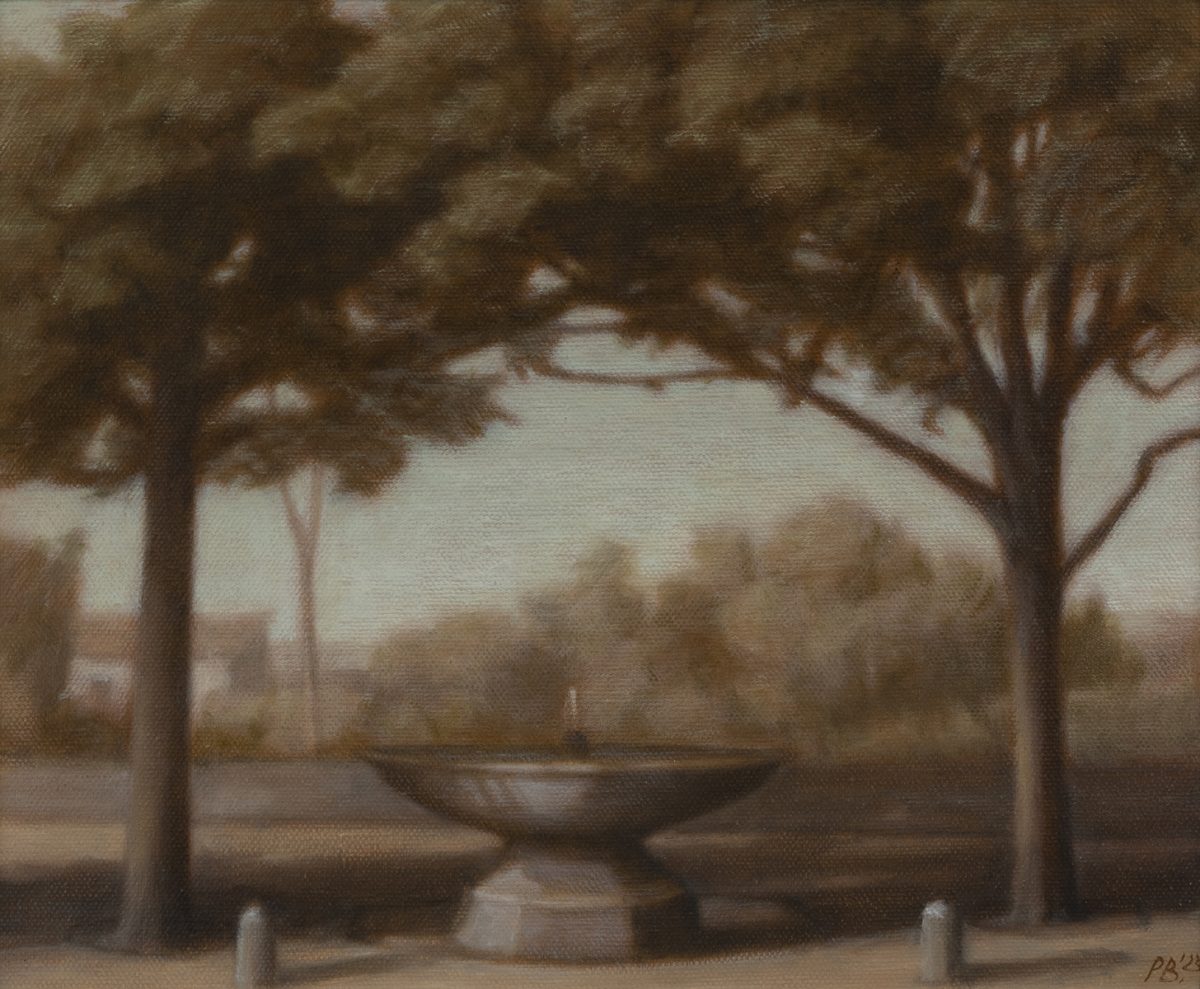
Peter Boggs – The Fountain – oil on canvas, 25.5 x 30.5cm. Photo: Supplied.
His imagery occupies a mysterious liminal space that is somewhat disconnected from a tangible reality. The forms in his paintings appear strangely familiar to us while, at the same time, foreign and slightly unsettling.
Sigmund Freud popularised the concept of the uncanny where something appears as unsettling but also feels oddly familiar. It is this bitter-sweet quality, where the known and that which is slightly eerie and edgy meet, that characterises many of Boggs’s paintings.
Boggs can be an exquisite literal draughtsman who can capture precise likenesses and surface textures, yet in his paintings he creates ‘memoryscapes’. All of the locations that he has painted in this exhibition he has visited, frequently on numerous occasions, and he knows them well, yet he recreates them from memory. They have been reimagined.
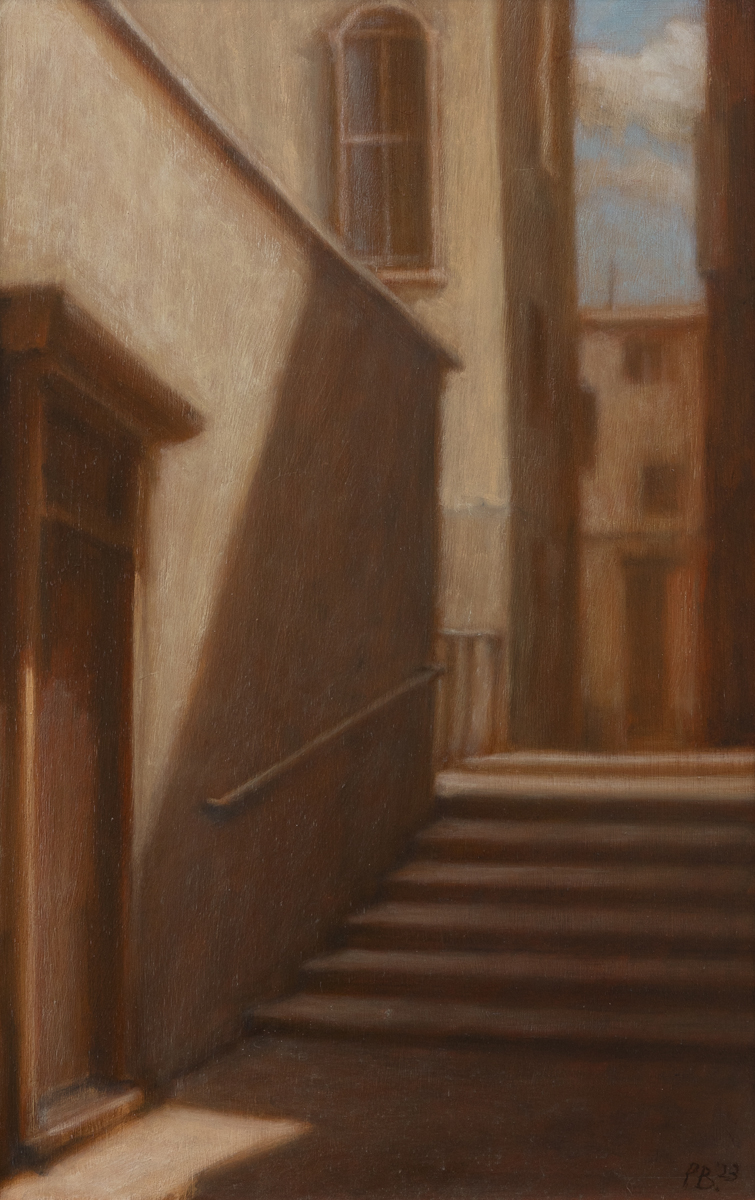
Peter Boggs – Shadowed walkway (Venice) – oil on birch panel, 33 x 21cm. Photo: Supplied.
There are the cultivated gardens and parklands of old Europe, including his beloved Boboli Gardens in Florence, as well as the alleys and streetscapes of Venice with a quiet reverence for the painters Walter Sickert and John Singer Sargent.
Paintings, including Shadowed lanes (Venice), Shadowed walkway (Venice), Hold back the night, The Fountain and Lakeside walk are all examples of his strangely transfigured spaces, rich in their spiritual associations.
All of his scenes are depopulated, rather than deserted. It is as if the human presence has been removed, perhaps only temporarily, although signs of habitation are omnipresent. It seems that at any moment, someone will appear from around the corner or walk down the alleyway, but for the moment all is still, tranquil and caught within a dream-like reality.
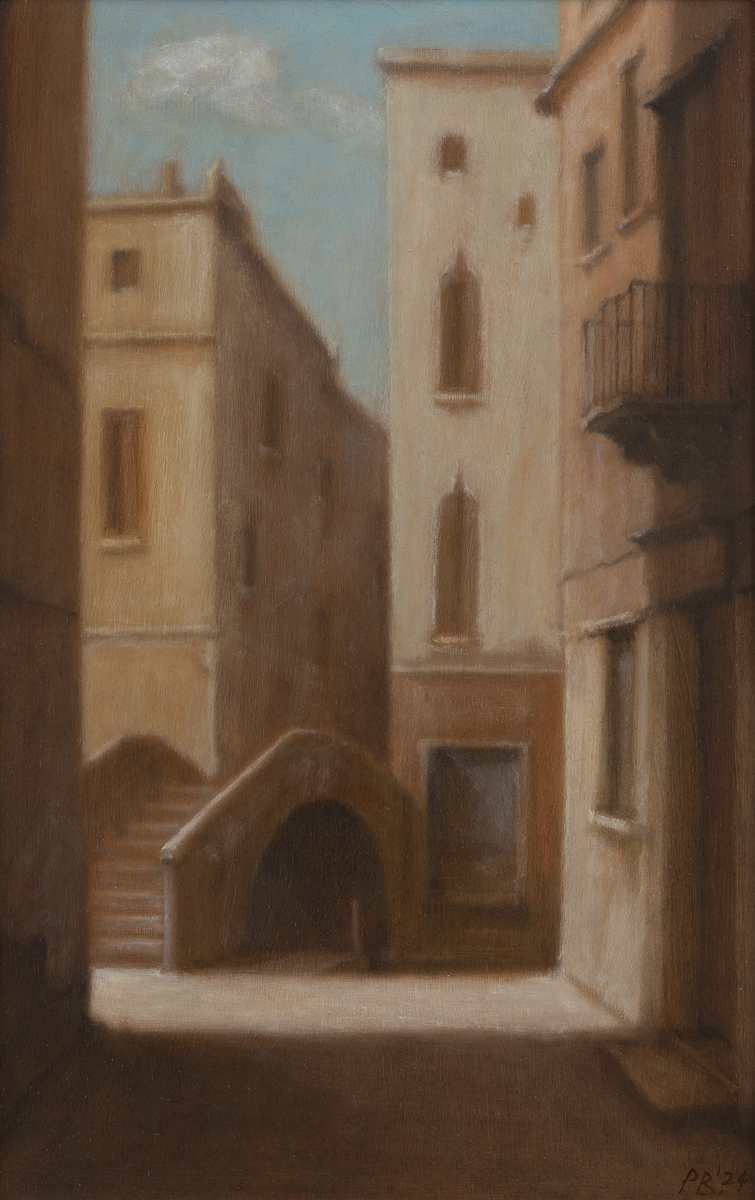
Peter Boggs – Shadowed lanes (Venice) – oil on birch panel, 33 x 21cm. Photo: Supplied.
The light is filtered, subdued and the tonal harmonies are beautifully balanced. Boggs speaks of his present series of paintings: “It is the silent stillness that is the aim; no trace of life or movement; rather a still and silent portrayal of something beautiful …”.
What this exhibition celebrates is the ability of art to take you out of a mundane reality that is bound up with the problems of the terrestrial realm and help you to embrace a spiritual state that is deeply contemplative and lyrical.
The 20 paintings at this exhibition are all to some extent exercises in reimagining something very beautiful and doing this in such a way that the viewer becomes a witness and a participant in this process.
In the neighbouring gallery is the collaborative glasswork of Benjamin Edols and Kathy Elliott in an exhibition called Tidal threads. Through a complex technique, Edols blows the glass forms and then Elliott carves on a lathe the lines and shapes that suggest marine forms.
The nine coloured glass pieces invite an exploration of the various aquatic forms embedded in the glass.
Peter Boggs: The memory of place, Benjamin Edols and Kathy Elliott: Tidal threads, Beaver Galleries, 81 Denison Street, Deakin, 15 August to 31 August, open Tuesday to Saturday 10 am to 5 pm.
Original Article published by Sasha Grishin on Riotact.


